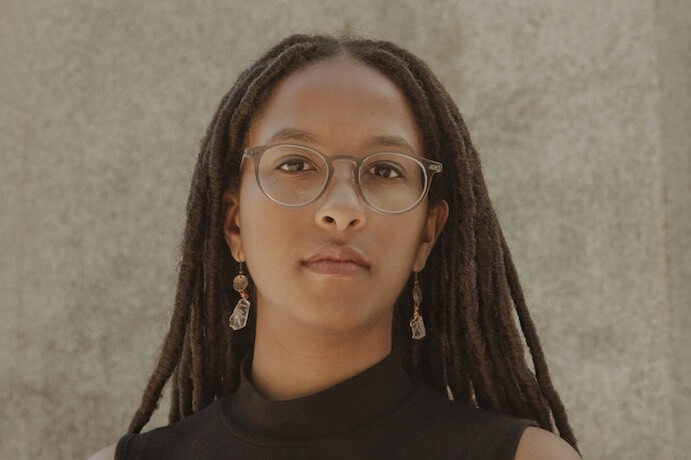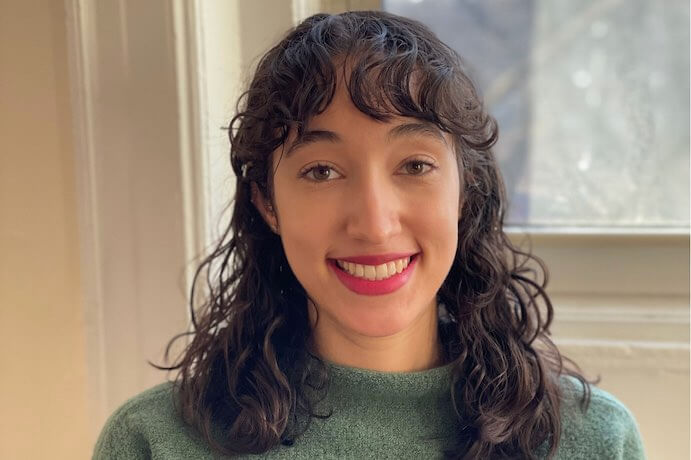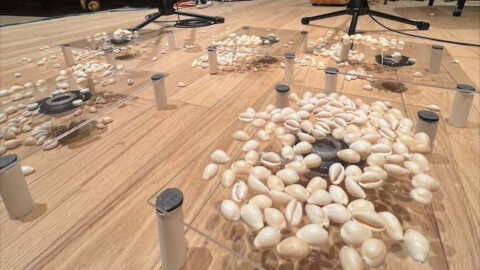The floor of Benzaquen Hall at the DiMenna Center for Classical Music in New York was buzzing as audience members gathered and socialized before “Columbia Composers Presents Dither Quartet” on Mar. 16. Not metaphorically buzzing with chatter and chuckles, but literally buzzing, like a colony of honeybees. With the audience seated at the same level as the performers, a surround sound electronic setup enclosed the audience, humming slightly as people settled into their seats.
The entirely wooden hall is acoustically superb under the right conditions – and it can quickly become painfully loud and overstimulating without the proper balance, as I discovered that evening. The electro-acoustic concert featured a mix of Columbia University doctoral composition students and guest artists based in New York. The music would have been enjoyable at a different venue, but I unfortunately had to leave the performance after the headache-inducing first half.
The program opened with Corie Rose Soumah’s electronic piece, porcelains/eco/#still magical. As we entered the venue, small glass tiles were propped on stilts only an inch or two from the floor. On them were the white, oval-shaped cowrie shells used to string necklaces and bracelets. The shells gently simmered before the concert, but as the work began to boil, all of them bubbled up into the air before falling back down to the glass tiles, or onto the floor. It was a sensorial feat as the floor buzzed underneath them, making the audience’s feet vibrate, too.
Panning between speakers in different corners of the room, the sound was akin to the plugging and swishing directly in the eardrum when completely submerged underwater. The piece evoked images of crickets chirping in the night, automatic sprinklers in the grass, the cascading girth of rain sticks, and what the wind would sound like with intonation. The only time the sound broke was for spoken words; “Hashtag Black Girl Magic,” Soumah said.

Camila Agosto followed with “where darkness swallows the sky” from The Memory of Water; Vol. II. Darkness swallowed the audience as the lights in the venue were completely turned off, the faces of cellist Thea Mesirow and violist Martine Thomas lit by the glow of the tablets on their music stands. The work began with low and deep booming, like heavy footsteps of a large creature not yet seen, but heard. I had to plug my ears when a loud and intensely uncomfortable resonance emerged, like a blinding light, but in my ears rather than my eyes. An audience member in my row folded over in his chair and held his forehead between his eyes trying to soothe the effect.
Despite the discomfort, there was a satisfying mystery between the electronics and the strings, sometimes making them indistinguishable from one another. Each sound reverberated, echoed, and turned dark once again — like the magnification of tiny sounds in a cave — and the combination of the darkness and the surround sound further blurred the lines between acoustic and electronic.

Scattered Light, a collaboration between composer Joshua Mastel and filmmaker Nico Cadena, was also played in complete darkness, and the piece suffered because of its place in the program. Without giving the audience a break to recuperate and reconnect with their bodies in the space, the concert became disorienting. The work also opened with a low, rolling thunder, but grew into a tinnitus-like experience. It wasn’t just a high-pitched sustained note, but the stinging, constant ringing sound trapped in the damaged ear that nobody else can hear. Again, I had to plug my ears. When I could listen, I recognized natural sounds like bird whistles, wind chimes, and water. However, by the time the piece arrived at a creative and dazzling production of lights splattering across the walls like a disco ball, I couldn’t savor it.
The film wasn’t projected until the last third of the piece, which left the audience dangling in the dark for quite a while. The familiar images might have had a grounding effect , but the video was zoomed in so closely that it was difficult to make out shapes and objects.

Live performances are always multi-sensory experiences; with acoustic music, we see and hear the performers. But listening to electronic music, the multi-sensory experience is felt in the body — the visceral impacts of electronic sounds, floor vibrations felt in the feet, lights (or the absence of them) changing the dimensions of the space, displacing or suspending the body.
But these sensations can also cause physical pain. These aren’t minuscule concerns; I couldn’t finish the concert and missed the second half, which included works by Fjóla Evans, Kitty Xiao, and Yanqi Chen performed by Dither Quartet. With a growing headache, listening to other audience members talk about their own discomfort, and watching ear plugs being handed out for the second half, I was frightened thinking about what I would experience for the rest of the concert.
It’s a difficult balance to strike between composing music that is true to your narratives and intentions while understanding the experience of consuming it. As I sat through the first half, I was asking myself, “What will I miss if I plug my ears?” and “What will I suffer if I don’t?” Poorly balanced concerts using electronics can be hugely overstimulating, a wider symptom of the bombardment we face in the digital age. It’s easier to distress someone than move them, easier to aggravate than console.
Each of the compositions were impressive in construction and presentation: Agosto’s meshing of strings and electronics, fusing them into one; Soumah’s thematic use of vibration and sensation, undergirding like a basso continuo, yet also a visual focal point; Mastel and Cadena’s prowess turning light into sound. The individual works were masterful in their own ways, but presented at this particular venue, in this particular order, they couldn’t be enjoyed. The venue and the programming have to be just as important as the music itself. With these considerations in mind, my hope is that experimental and contemporary classical music can elicit a larger scope of emotions and understanding rather than turning ears away from it altogether.
I CARE IF YOU LISTEN is an editorially-independent program of the American Composers Forum, and is made possible thanks to generous donor and institutional support. Opinions expressed are solely those of the author and may not represent the views of ICIYL or ACF.
You can support the work of ICIYL with a tax-deductible gift to ACF. For more on ACF, visit the “At ACF” section or composersforum.org.
























